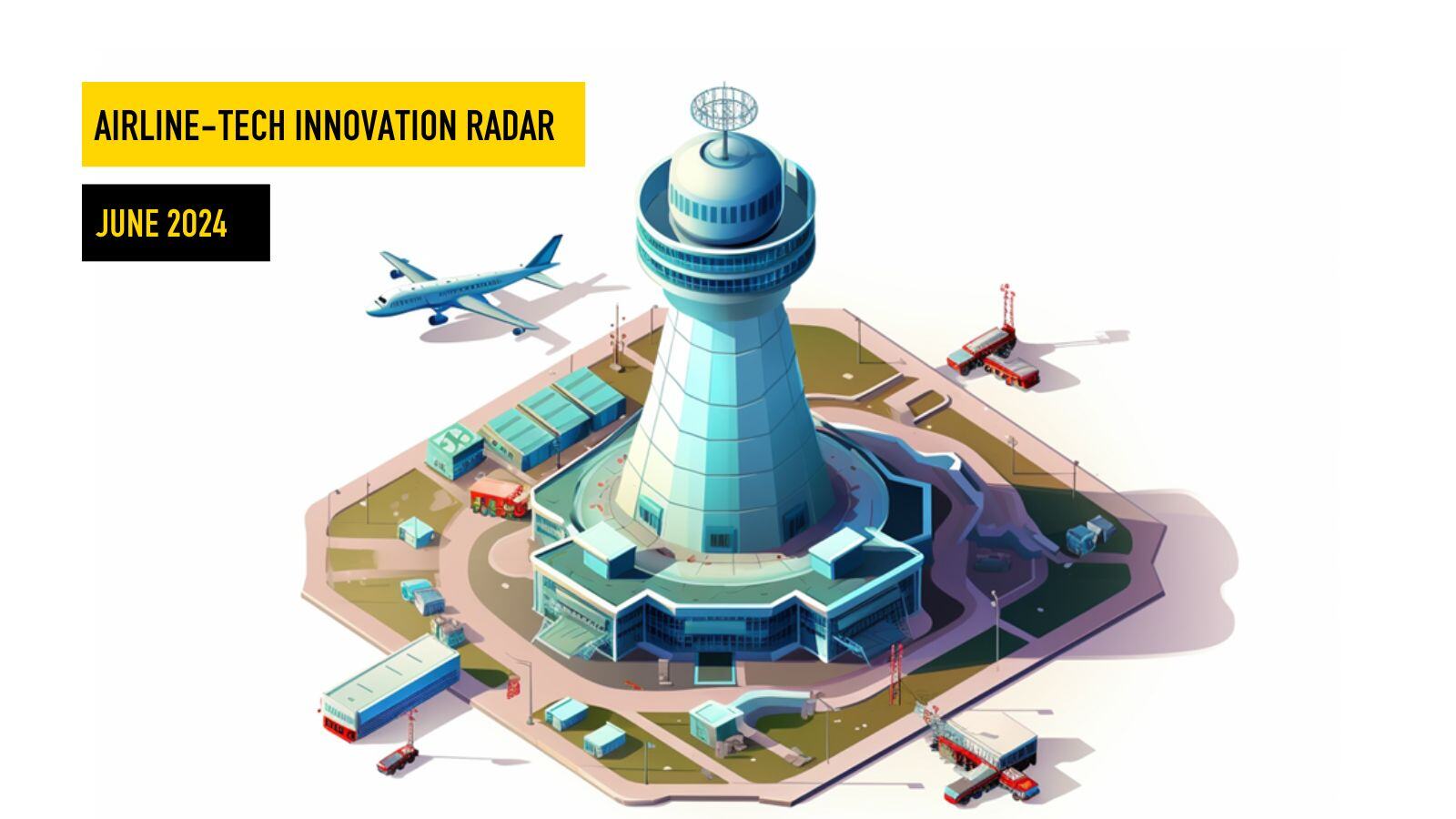Welcome back to our monthly OAG Airline-Tech Innovation Radar.
In today’s edition, we are highlighting three key innovations in the Airline-Tech ecosystem, with a special focus on initiatives by airlines and technology providers that are improving the customer experience.
This area is particularly crucial as the airline industry gears up for another stressful and extremely busy summer season.
Is the aviation industry ready for this summer? It remains to be seen.
However, the innovations we're showcasing today certainly indicate that the industry is actively working to make air travel more frictionless. By the way, this is something we explore in much more detail in our brand-new Airline Passenger Experience Report.
Here are June’s top three innovations:
INNOVATION #1: UNITED AIRLINES' PERSONALIZED IN-FLIGHT ADVERTISING
United Airlines has taken a significant step forward in in-flight entertainment (IFE) by integrating personalized ads into its planes' seat-back screens. This approach allows United to display targeted advertisements based on individual passenger data such as their home cities, frequent destinations, age group, and cabin class. As passengers browse through movies and TV shows, they encounter still-image ads, and before their selected entertainment begins, they must watch a 30-second commercial tailored to their profile.
Why is this innovation so significant?
This initiative is part of a broader trend across industries where companies leverage extensive customer data to drive advertising revenues, a strategy increasingly prevalent in the airline industry. In our deep dive on "Elevating the In-Flight Experience Through Innovation," we discussed how in-seat IFE systems are evolving from mere entertainment platforms to multifunctional interfaces that enhance ancillary revenue through targeted advertising and offer a heightened level of service flexibility.
United is not alone in this pursuit. For instance, Singapore Airlines has transformed its KrisWorld IFE system into a dynamic retail platform where passengers can shop from over 4,000 products and enjoy duty-free prices with delivery options extending to their next flight or directly to their homes. This showcases the potential of seatback screens as lucrative retail interfaces.
However, what distinguishes United’s strategy is its integration into a broader media network. Earlier this year, United launched Kinective Media, the airline industry’s first ad network, capitalizing on its fleet’s 100,000+ seatback screens. With an average flight time providing around three hours of passenger attention, Kinective Media opens up a vast landscape for advertising opportunities.
Despite its potential, this strategy is not without challenges. Privacy concerns are rising, with debates intensifying around whether airlines are monetizing personal data "unfairly or deceptively." Moreover, Kinective Media must navigate the stringent security requirements set by the Federal Aviation Administration (FAA) for in-flight technology, ensuring compliance while innovating.
In any case, United’s move to monetize its IFE system through Kinective Media represents a bold expansion of its business model.

INNOVATION #2: AEROPORTI DI ROMA'S SMART BOARDING INITIATIVE

Aeroporti di Roma (ADR) is tackling one of the most cumbersome aspects of air travel: the queuing experience during boarding. At Fiumicino Airport, within the "Molo E" non-Schengen boarding area, as first reported by Future Travel Experience, ADR has introduced the "Smart Boarding" service. This forward-thinking solution is designed to streamline the boarding process and enhance passenger convenience.
Here's how it works:
- Passengers can access this service simply by scanning a QR code. There's no need for a dedicated mobile app, making the system easily accessible to anyone with a smartphone.
- Utilizing a network of micro-cameras, the service collects and processes real-time data on boarding operations. Passengers can view live streams of their departure gates and receive updates on the boarding progress directly on their mobile phones.
- This allows travelers to monitor the situation and decide the best time to join the queue, effectively reducing wait times and enhancing their overall airport experience.
Here's what we like about this innovation from a broader technology perspective:
This service operates independently of any airport or airline system, which speeds up its functionality and minimizes data privacy concerns, ensuring compliance with GDPR regulations.
The Smart Boarding service is a component of ADR's broader tech transformation, which includes the Digiport platform. Also accessible via QR code, Digiport connects travelers to a WhatsApp chatbot that provides real-time flight status notifications and comprehensive information about the services available at Fiumicino Airport. This demonstrates how airports can leverage technology to provide real-time, valuable information without the complexities of integrating with existing legacy systems.
INNOVATION #3: SAFRAN'S INCLUSIVE IN-FLIGHT ENTERTAINMENT

Our final innovation of the month also focuses on enhancing the IFE experience, not just by increasing airline revenue (see Innovation #1) but by significantly improving accessibility for all passengers, including those with vision, auditory, motor function, and cognitive disabilities. Safran Passenger Innovations (SPI), known for its RAVE and next-gen RAVE Ultra IFE systems, has introduced a noteworthy development in this area.
In collaboration with Air New Zealand and Virgin Atlantic, SPI has developed the RAVE OS Accessible Mode. This new IFE solution includes several key features designed to ensure it is accessible to all passengers:
- A straightforward and easy-to-navigate user interface, which simplifies the complexity typically associated with digital interfaces and IFE screens.
- A screen reader that communicates the selected options through the passenger’s headset, facilitating an accessible and independent user experience for passengers with visual impairments.
Why does this innovation stand out?
What makes the RAVE OS Accessible Mode particularly notable is SPI’s decision to offer this accessibility feature for free to both customers and competitors.
This initiative reflects a strong commitment to improving accessibility within the aviation industry and setting a new industry standard for inclusivity.
WRAPPING UP JUNE'S INNOVATIONS
This month's innovations underscore a relentless drive toward enhancing the airline passenger experience through intelligent and inclusive technology solutions.
For a deeper dive into how data, innovation, and technology are shaping the future of air travel, be sure to check out our brand-new report, "The Future of the Airline Passenger Experience." This comprehensive analysis offers more insights into how the industry can continuously improve the air traveler experience.




